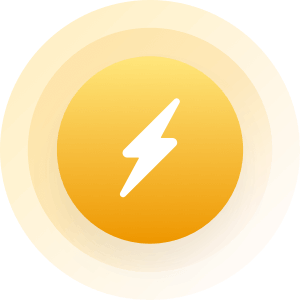| Topic: Iron Dome Fake - A Massive Hoax? | |
|---|---|
|
Hey.... I only post them, but he raises some good questions. Wouldn't be the first time and won't be the last that a govt and its media lies to its people.... or the world.... to promote an agenda http://www.youtube.com/watch?v=uM0J0LI1ymA&feature=youtu.be |
|
|
|
|
|
From Wiki ... some information about the rockets ... which are not very sophisticated.
"Rocket launches The production of Qassams began in September 2001 following the outbreak of the Second Intifada. The first Qassam to be launched was the Qassam-1, fired on October 2001, with a maximum range of 3 kilometers (1.9 mi) to 4.5 kilometers (2.8 mi).[7] February 10, 2002 was the first time Palestinians launched rockets into Israel, rather than at Israeli settlements in the Gaza Strip. One of the rockets landed in Kibbutz Saad.[9] A Qassam first hit an Israeli city on March 5, 2002 when two rockets struck the southern city of Sderot. Some rockets have hit as far as the edge of Ashkelon. By the end of December 2008, a total of 15 people had been killed by Palestinian rockets since attacks began in 2001.[10] Since 2000, Palestinian rockets, which include the Qassam, alongside others such as the Grad rocket, have been used to kill 22 Israeli citizens and one Thai national (as of January 9, 2009).[11][12] Rocket design and cost Rockets being exhibited The aim of the Qassam rocket design appears to be ease and speed of manufacture, using common tools and components. To this end, the rockets are propelled by a solid mixture of sugar and potassium nitrate, a widely available fertilizer. The warhead is filled with smuggled or scavenged TNT and urea nitrate, another common fertilizer. This is close to Ammonite.[13] The rocket consists of a steel cylinder, containing a rectangular block of the propellant. A steel plate which forms and supports the nozzles is then spot-welded to the base of the cylinder. The warhead consists of a simple metal shell surrounding the explosives, and is triggered by a fuse constructed using a simple firearm cartridge, a spring and a nail.[13] While early designs used a single nozzle which screwed into the base, recent rockets use a seven-nozzle design, with the nozzles drilled directly into the rocket baseplate. This change both increases the tolerance of the rocket to small nozzle design defects, and eases manufacture by allowing the use of a drill rather than a lathe during manufacture due to the smaller nozzle size. However due to the cone shape of each of the 7 nozzles, each nozzle's inside must be made with a lathe, or else the interior of the nozzle would be cylindrical rather than conical (see rocket engine nozzle). Unlike many other rockets, the nozzles are not canted, which means the rocket does not spin about its longitudinal axis during flight. While this results in a significant decrease in accuracy, it greatly simplifies rocket manufacture and the launch systems required.[13] Cost The cost of the materials used for manufacturing each Qassam is up to $800 or €500 (in 2008-9) per rocket." |
|
|
|
|
|
From Wiki ... some information about the rockets ... which are not very sophisticated. "Rocket launches The production of Qassams began in September 2001 following the outbreak of the Second Intifada. The first Qassam to be launched was the Qassam-1, fired on October 2001, with a maximum range of 3 kilometers (1.9 mi) to 4.5 kilometers (2.8 mi).[7] February 10, 2002 was the first time Palestinians launched rockets into Israel, rather than at Israeli settlements in the Gaza Strip. One of the rockets landed in Kibbutz Saad.[9] A Qassam first hit an Israeli city on March 5, 2002 when two rockets struck the southern city of Sderot. Some rockets have hit as far as the edge of Ashkelon. By the end of December 2008, a total of 15 people had been killed by Palestinian rockets since attacks began in 2001.[10] Since 2000, Palestinian rockets, which include the Qassam, alongside others such as the Grad rocket, have been used to kill 22 Israeli citizens and one Thai national (as of January 9, 2009).[11][12] Rocket design and cost Rockets being exhibited The aim of the Qassam rocket design appears to be ease and speed of manufacture, using common tools and components. To this end, the rockets are propelled by a solid mixture of sugar and potassium nitrate, a widely available fertilizer. The warhead is filled with smuggled or scavenged TNT and urea nitrate, another common fertilizer. This is close to Ammonite.[13] The rocket consists of a steel cylinder, containing a rectangular block of the propellant. A steel plate which forms and supports the nozzles is then spot-welded to the base of the cylinder. The warhead consists of a simple metal shell surrounding the explosives, and is triggered by a fuse constructed using a simple firearm cartridge, a spring and a nail.[13] While early designs used a single nozzle which screwed into the base, recent rockets use a seven-nozzle design, with the nozzles drilled directly into the rocket baseplate. This change both increases the tolerance of the rocket to small nozzle design defects, and eases manufacture by allowing the use of a drill rather than a lathe during manufacture due to the smaller nozzle size. However due to the cone shape of each of the 7 nozzles, each nozzle's inside must be made with a lathe, or else the interior of the nozzle would be cylindrical rather than conical (see rocket engine nozzle). Unlike many other rockets, the nozzles are not canted, which means the rocket does not spin about its longitudinal axis during flight. While this results in a significant decrease in accuracy, it greatly simplifies rocket manufacture and the launch systems required.[13] Cost The cost of the materials used for manufacturing each Qassam is up to $800 or €500 (in 2008-9) per rocket." seems there are some of a more advanced design smuggled in now! |
|
|
|
|
|
From Wiki ... some information about the rockets ... which are not very sophisticated. "Rocket launches The production of Qassams began in September 2001 following the outbreak of the Second Intifada. The first Qassam to be launched was the Qassam-1, fired on October 2001, with a maximum range of 3 kilometers (1.9 mi) to 4.5 kilometers (2.8 mi).[7] February 10, 2002 was the first time Palestinians launched rockets into Israel, rather than at Israeli settlements in the Gaza Strip. One of the rockets landed in Kibbutz Saad.[9] A Qassam first hit an Israeli city on March 5, 2002 when two rockets struck the southern city of Sderot. Some rockets have hit as far as the edge of Ashkelon. By the end of December 2008, a total of 15 people had been killed by Palestinian rockets since attacks began in 2001.[10] Since 2000, Palestinian rockets, which include the Qassam, alongside others such as the Grad rocket, have been used to kill 22 Israeli citizens and one Thai national (as of January 9, 2009).[11][12] Rocket design and cost Rockets being exhibited The aim of the Qassam rocket design appears to be ease and speed of manufacture, using common tools and components. To this end, the rockets are propelled by a solid mixture of sugar and potassium nitrate, a widely available fertilizer. The warhead is filled with smuggled or scavenged TNT and urea nitrate, another common fertilizer. This is close to Ammonite.[13] The rocket consists of a steel cylinder, containing a rectangular block of the propellant. A steel plate which forms and supports the nozzles is then spot-welded to the base of the cylinder. The warhead consists of a simple metal shell surrounding the explosives, and is triggered by a fuse constructed using a simple firearm cartridge, a spring and a nail.[13] While early designs used a single nozzle which screwed into the base, recent rockets use a seven-nozzle design, with the nozzles drilled directly into the rocket baseplate. This change both increases the tolerance of the rocket to small nozzle design defects, and eases manufacture by allowing the use of a drill rather than a lathe during manufacture due to the smaller nozzle size. However due to the cone shape of each of the 7 nozzles, each nozzle's inside must be made with a lathe, or else the interior of the nozzle would be cylindrical rather than conical (see rocket engine nozzle). Unlike many other rockets, the nozzles are not canted, which means the rocket does not spin about its longitudinal axis during flight. While this results in a significant decrease in accuracy, it greatly simplifies rocket manufacture and the launch systems required.[13] Cost The cost of the materials used for manufacturing each Qassam is up to $800 or €500 (in 2008-9) per rocket." seems there are some of a more advanced design smuggled in now! There are bigger, more sophisticated designs now, although the above design is still used in large numbers. The video claims the rockets are fakes, which is not true. The rockets have crude warheads which explode and kill. They are not accurate but don't need to be when used as a device of terror. |
|
|
|
|
|
From Wiki ... some information about the rockets ... which are not very sophisticated. "Rocket launches The production of Qassams began in September 2001 following the outbreak of the Second Intifada. The first Qassam to be launched was the Qassam-1, fired on October 2001, with a maximum range of 3 kilometers (1.9 mi) to 4.5 kilometers (2.8 mi).[7] February 10, 2002 was the first time Palestinians launched rockets into Israel, rather than at Israeli settlements in the Gaza Strip. One of the rockets landed in Kibbutz Saad.[9] A Qassam first hit an Israeli city on March 5, 2002 when two rockets struck the southern city of Sderot. Some rockets have hit as far as the edge of Ashkelon. By the end of December 2008, a total of 15 people had been killed by Palestinian rockets since attacks began in 2001.[10] Since 2000, Palestinian rockets, which include the Qassam, alongside others such as the Grad rocket, have been used to kill 22 Israeli citizens and one Thai national (as of January 9, 2009).[11][12] Rocket design and cost Rockets being exhibited The aim of the Qassam rocket design appears to be ease and speed of manufacture, using common tools and components. To this end, the rockets are propelled by a solid mixture of sugar and potassium nitrate, a widely available fertilizer. The warhead is filled with smuggled or scavenged TNT and urea nitrate, another common fertilizer. This is close to Ammonite.[13] The rocket consists of a steel cylinder, containing a rectangular block of the propellant. A steel plate which forms and supports the nozzles is then spot-welded to the base of the cylinder. The warhead consists of a simple metal shell surrounding the explosives, and is triggered by a fuse constructed using a simple firearm cartridge, a spring and a nail.[13] While early designs used a single nozzle which screwed into the base, recent rockets use a seven-nozzle design, with the nozzles drilled directly into the rocket baseplate. This change both increases the tolerance of the rocket to small nozzle design defects, and eases manufacture by allowing the use of a drill rather than a lathe during manufacture due to the smaller nozzle size. However due to the cone shape of each of the 7 nozzles, each nozzle's inside must be made with a lathe, or else the interior of the nozzle would be cylindrical rather than conical (see rocket engine nozzle). Unlike many other rockets, the nozzles are not canted, which means the rocket does not spin about its longitudinal axis during flight. While this results in a significant decrease in accuracy, it greatly simplifies rocket manufacture and the launch systems required.[13] Cost The cost of the materials used for manufacturing each Qassam is up to $800 or €500 (in 2008-9) per rocket." seems there are some of a more advanced design smuggled in now! There are bigger, more sophisticated designs now, although the above design is still used in large numbers. The video claims the rockets are fakes, which is not true. The rockets have crude warheads which explode and kill. They are not accurate but don't need to be when used as a device of terror. yep,quite nasty,yet some think that Israel ought to just ignore the Crap,and not be allowed to do anything about it,on account that they have more sophisticated Weapons! Would be like,If someone started shooting at me with a "Saturday-Night Special",and I take him out with a GLOCK,the Court would lock me up for getting the Job done with a Weapon that's too sophisticated,and therefore unjust! 
|
|
|
|
|
|
From Wiki ... some information about the rockets ... which are not very sophisticated. "Rocket launches The production of Qassams began in September 2001 following the outbreak of the Second Intifada. The first Qassam to be launched was the Qassam-1, fired on October 2001, with a maximum range of 3 kilometers (1.9 mi) to 4.5 kilometers (2.8 mi).[7] February 10, 2002 was the first time Palestinians launched rockets into Israel, rather than at Israeli settlements in the Gaza Strip. One of the rockets landed in Kibbutz Saad.[9] A Qassam first hit an Israeli city on March 5, 2002 when two rockets struck the southern city of Sderot. Some rockets have hit as far as the edge of Ashkelon. By the end of December 2008, a total of 15 people had been killed by Palestinian rockets since attacks began in 2001.[10] Since 2000, Palestinian rockets, which include the Qassam, alongside others such as the Grad rocket, have been used to kill 22 Israeli citizens and one Thai national (as of January 9, 2009).[11][12] Rocket design and cost Rockets being exhibited The aim of the Qassam rocket design appears to be ease and speed of manufacture, using common tools and components. To this end, the rockets are propelled by a solid mixture of sugar and potassium nitrate, a widely available fertilizer. The warhead is filled with smuggled or scavenged TNT and urea nitrate, another common fertilizer. This is close to Ammonite.[13] The rocket consists of a steel cylinder, containing a rectangular block of the propellant. A steel plate which forms and supports the nozzles is then spot-welded to the base of the cylinder. The warhead consists of a simple metal shell surrounding the explosives, and is triggered by a fuse constructed using a simple firearm cartridge, a spring and a nail.[13] While early designs used a single nozzle which screwed into the base, recent rockets use a seven-nozzle design, with the nozzles drilled directly into the rocket baseplate. This change both increases the tolerance of the rocket to small nozzle design defects, and eases manufacture by allowing the use of a drill rather than a lathe during manufacture due to the smaller nozzle size. However due to the cone shape of each of the 7 nozzles, each nozzle's inside must be made with a lathe, or else the interior of the nozzle would be cylindrical rather than conical (see rocket engine nozzle). Unlike many other rockets, the nozzles are not canted, which means the rocket does not spin about its longitudinal axis during flight. While this results in a significant decrease in accuracy, it greatly simplifies rocket manufacture and the launch systems required.[13] Cost The cost of the materials used for manufacturing each Qassam is up to $800 or €500 (in 2008-9) per rocket." seems there are some of a more advanced design smuggled in now! There are bigger, more sophisticated designs now, although the above design is still used in large numbers. The video claims the rockets are fakes, which is not true. The rockets have crude warheads which explode and kill. They are not accurate but don't need to be when used as a device of terror. yep,quite nasty,yet some think that Israel ought to just ignore the Crap,and not be allowed to do anything about it,on account that they have more sophisticated Weapons! Would be like,If someone started shooting at me with a "Saturday-Night Special",and I take him out with a GLOCK,the Court would lock me up for getting the Job done with a Weapon that's too sophisticated,and therefore unjust! 
I'm not sure if the Israeli Army has it (they probably do) but the US has artillery radar that quickly calculates the origin of a ballistic missile or artillery shell. It supplies the exact location of launch so an attack by artillery can be launched immediately. I suspect the system is not used because of the number of civilian causalities that would result. |
|
|
|
|
|
From Wiki ... some information about the rockets ... which are not very sophisticated. "Rocket launches The production of Qassams began in September 2001 following the outbreak of the Second Intifada. The first Qassam to be launched was the Qassam-1, fired on October 2001, with a maximum range of 3 kilometers (1.9 mi) to 4.5 kilometers (2.8 mi).[7] February 10, 2002 was the first time Palestinians launched rockets into Israel, rather than at Israeli settlements in the Gaza Strip. One of the rockets landed in Kibbutz Saad.[9] A Qassam first hit an Israeli city on March 5, 2002 when two rockets struck the southern city of Sderot. Some rockets have hit as far as the edge of Ashkelon. By the end of December 2008, a total of 15 people had been killed by Palestinian rockets since attacks began in 2001.[10] Since 2000, Palestinian rockets, which include the Qassam, alongside others such as the Grad rocket, have been used to kill 22 Israeli citizens and one Thai national (as of January 9, 2009).[11][12] Rocket design and cost Rockets being exhibited The aim of the Qassam rocket design appears to be ease and speed of manufacture, using common tools and components. To this end, the rockets are propelled by a solid mixture of sugar and potassium nitrate, a widely available fertilizer. The warhead is filled with smuggled or scavenged TNT and urea nitrate, another common fertilizer. This is close to Ammonite.[13] The rocket consists of a steel cylinder, containing a rectangular block of the propellant. A steel plate which forms and supports the nozzles is then spot-welded to the base of the cylinder. The warhead consists of a simple metal shell surrounding the explosives, and is triggered by a fuse constructed using a simple firearm cartridge, a spring and a nail.[13] While early designs used a single nozzle which screwed into the base, recent rockets use a seven-nozzle design, with the nozzles drilled directly into the rocket baseplate. This change both increases the tolerance of the rocket to small nozzle design defects, and eases manufacture by allowing the use of a drill rather than a lathe during manufacture due to the smaller nozzle size. However due to the cone shape of each of the 7 nozzles, each nozzle's inside must be made with a lathe, or else the interior of the nozzle would be cylindrical rather than conical (see rocket engine nozzle). Unlike many other rockets, the nozzles are not canted, which means the rocket does not spin about its longitudinal axis during flight. While this results in a significant decrease in accuracy, it greatly simplifies rocket manufacture and the launch systems required.[13] Cost The cost of the materials used for manufacturing each Qassam is up to $800 or €500 (in 2008-9) per rocket." seems there are some of a more advanced design smuggled in now! There are bigger, more sophisticated designs now, although the above design is still used in large numbers. The video claims the rockets are fakes, which is not true. The rockets have crude warheads which explode and kill. They are not accurate but don't need to be when used as a device of terror. yep,quite nasty,yet some think that Israel ought to just ignore the Crap,and not be allowed to do anything about it,on account that they have more sophisticated Weapons! Would be like,If someone started shooting at me with a "Saturday-Night Special",and I take him out with a GLOCK,the Court would lock me up for getting the Job done with a Weapon that's too sophisticated,and therefore unjust! 
I'm not sure if the Israeli Army has it (they probably do) but the US has artillery radar that quickly calculates the origin of a ballistic missile or artillery shell. It supplies the exact location of launch so an attack by artillery can be launched immediately. I suspect the system is not used because of the number of civilian causalities that would result. this seems to suggest it! http://allenbwest.com/2014/07/artillery-data-reveals-hamas-lies-media-cover-israel/ |
|
|
|
|








